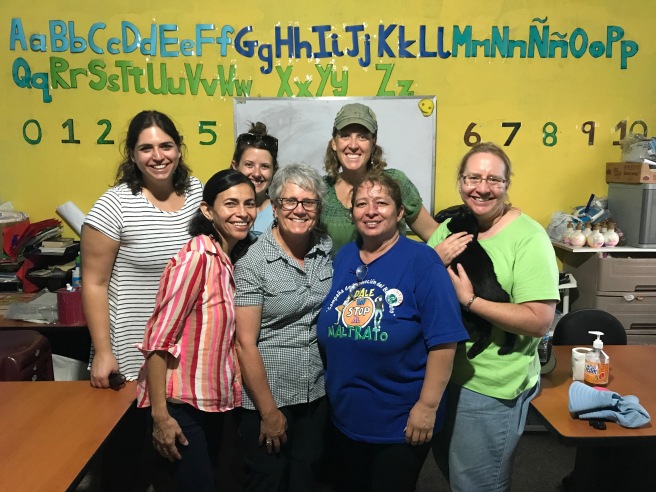“Most churches are inactive in their communities not because they don’t understand the theological call to love our neighbors. It’s because they are afraid.” (Ivan, Guatemala City)
I recently met and accompanied Doña Tita, the Mother Teresa of one of the biggest slums in the Americas, as she visited and prayed with people whose family members have been murdered by the ruling gangs.
“Honestly, I feel like an alien at my church. I was invited to a women’s group and they asked for prayer requests, and all the ladies were sharing things like pray for my new recipe to turn out well. Meanwhile, a woman here [in the slum] was giving birth hours after her husband had been murdered by gang members. I couldn’t even tell these women what was on my heart.”
“This work is a lonely path. The local church does not know what to do with a place like La Limonada, or with people like me.”
Tita has established four child development academies inside La Limonada, a slum with a population of 80,000, built on the slopes of a ravine or natural watershed. Ironically, the national Justice Offices overlook the slum. La Limonada is controlled by the MS-13 and Calle 18 gangs, with invisible boundaries, which if crossed, will bring you a bullet or a knife. Tita visits the families within the slum and prays with them. Her focus is on prevention, which is why she opened the child development academies. The people living in La Limonada know Tita and love her. Yet she fully expects that one day she will die from a bullet to her head inside La Limonada.
We met with one woman whose husband owes the gangs money, so he took off. One night the gangs came across the ravine to the wife’s home, demanding that she pay his debt. She suffered a stroke because of the horror of the experience.
We met another woman whose husband was killed by the gangs. Her family is in similar circumstances of poverty and danger, so they are in no position to help her. Yet she trusts fully in God, and prays that the friend who lives with her will notice her testimony during her own desperation.
Puertas de Esperanza, La Terminal
Jomara also focuses on prevention, hosting a child development center called Puertas de Esperanza (Doors of Hope). There the children can get a good meal, clean water, and showers. They even have a pet cat name Frijolito. Jomara visits families within La Terminal, the largest “popular” (flea) market, which sells everything including prostitution. The people there know her and love her. Jomara holds multiple degrees, and her friends ask her why she does what she does, when she could have an important, well-paid job. Like La Limonada, La Terminal is a dangerous place. Police and fire officials won’t go there; it’s an enormous maze of sales stalls and living quarters. There is no water or sewage, so urine and waste are everywhere.
As we wound through the maze of the market, we ended at the market’s dump. The truck that collects the garbage was broken, so the garbage had not been picked up for longer than usual. Small children were climbing on the piles, fishing out junk that could be recycled: plastic bottles, aluminum cans, and cardboard.
Jomara’s ministry is located outside La Terminal, about a block away from the dump, but she’s praying to buy a lot that backs up onto the dump. As they say in the real estate business: location, location, location. We were astounded at the asking price for this particular location; who else wants property in the dump? Who else but Jomara.



